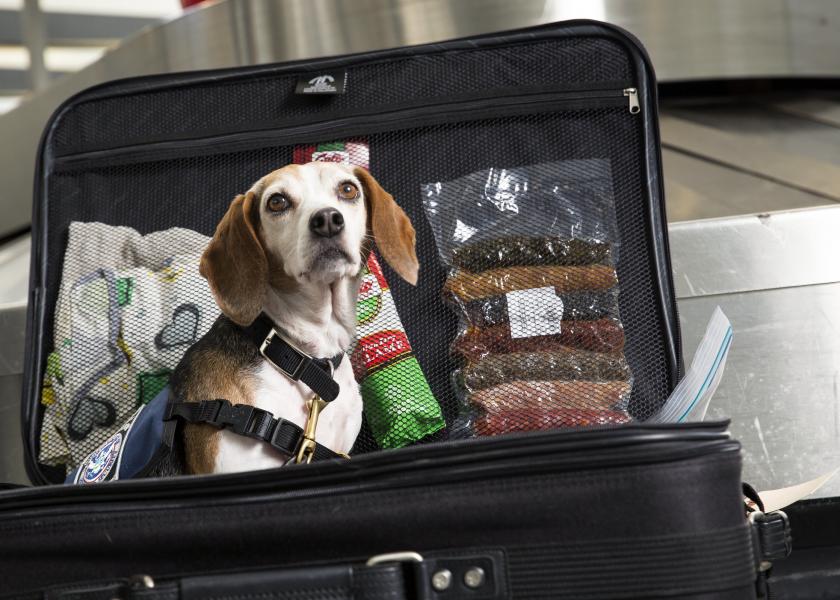CBP Casts Wide Net to Assess African Swine Fever Threats to the U.S.

Pork producers can rest assured that U.S. Customs and Border Protection (CBP) agricultural inspectors have been and are continuing to focus “all hands on deck” to protect U.S. borders from foreign animal diseases (FADs).
African swine fever (ASF) is slowly making its way closer to the U.S. and with the recent announcement of positive ASF cases in the Dominican Republic (DR), there are a lot of questions and concern in the U.S. now.
John Sagle, deputy executive director with CBP, said they are using all the resources they have to address these concerns and prevent FADs from coming in, during a webinar presented by the National Pork Board and supported by the Pork Checkoff on Aug. 10.
Using a layered approach, CBP works closely with USDA’s Animal and Plant Health Inspection Service (APHIS) and the pork industry to address these risks. Monitoring ports of entry for cargo and passengers, bulk surveillance and outreach are just a few of the layers that CBP has in place to protect the country. Sagle stressed that CBP was already focusing extra closely on the DR since it has known cases of classical swine fever, another FAD that the U.S. is working hard to keep out.
“We want to be very proactive. When we have a general risk or threat in a particular area, we're covering the next logical sequence of locations that could be next so we are ahead of the curve,” Sagle said.
Outreach is a critical function of CBP’s efforts, he added. “An informed trade and travel community is a good community – a more compliant community and a more proactive community in terms of prevention. We want to ensure everyone can do their part by being aware of the risks and the threats and what comes with it.”
What Makes the DR Unique?
When it comes to protecting U.S. borders, Sagle reminded the audience that ASF is nothing new and that his team has been actively battling this disease for years.
However, with the increased threat in the Western Hemisphere, what do U.S. pork producers need to know about what makes the DR and the Caribbean unique?
Non-commercial jets and small sea vessels are abundant in this area, Sagle explained, which makes it more complicated to protect all those possible entry points. The DR also has ports of entry where international garbage is offloaded.
Because of this, CBP works diligently to make sure travelers are aware of the risks of bringing in infected pork products into airports in addition to using specially trained canine units to detect ASF threats.
How Did ASF Makes Its Way to the Western Hemisphere?
Although the jury is still out on exactly how ASF was spread to the DR, Sagle says the question itself is what drives some of the rationale of how CBP approaches this risk factor.
“There’s direct linkages of people in commerce from the DR to the U.S. in terms of preventing, but it becomes more of a secondary linkage piece, too. What bulk products is the DR importing into their country and remanufacturing and processing and re-exporting out? And likewise, what kind of internal international traffic and travel are they experiencing that poses risks that could in turn, come to the United States?”
The truth is it could be any number of those things, he shared.
“It’s recognizing the secondary risk effects, too. It’s not just what's in the DR now and what could come to the United States. But it’s also what pork do they export per se that goes to another country for remanufacturing then comes to the U.S.,” he said.
It’s connecting all those dots to have a really wide umbrella of a risk profile, he said.
“It could have been any of the normal vectors and modes, and we'll act as if it was all of them to ensure that we address all those risks appropriately,” Sagle said.
More from Farm Journal's PORK:
Do You Know the Signs of African Swine Fever?
South Korea Reports African Swine Fever on Large Commercial Pig Farm







